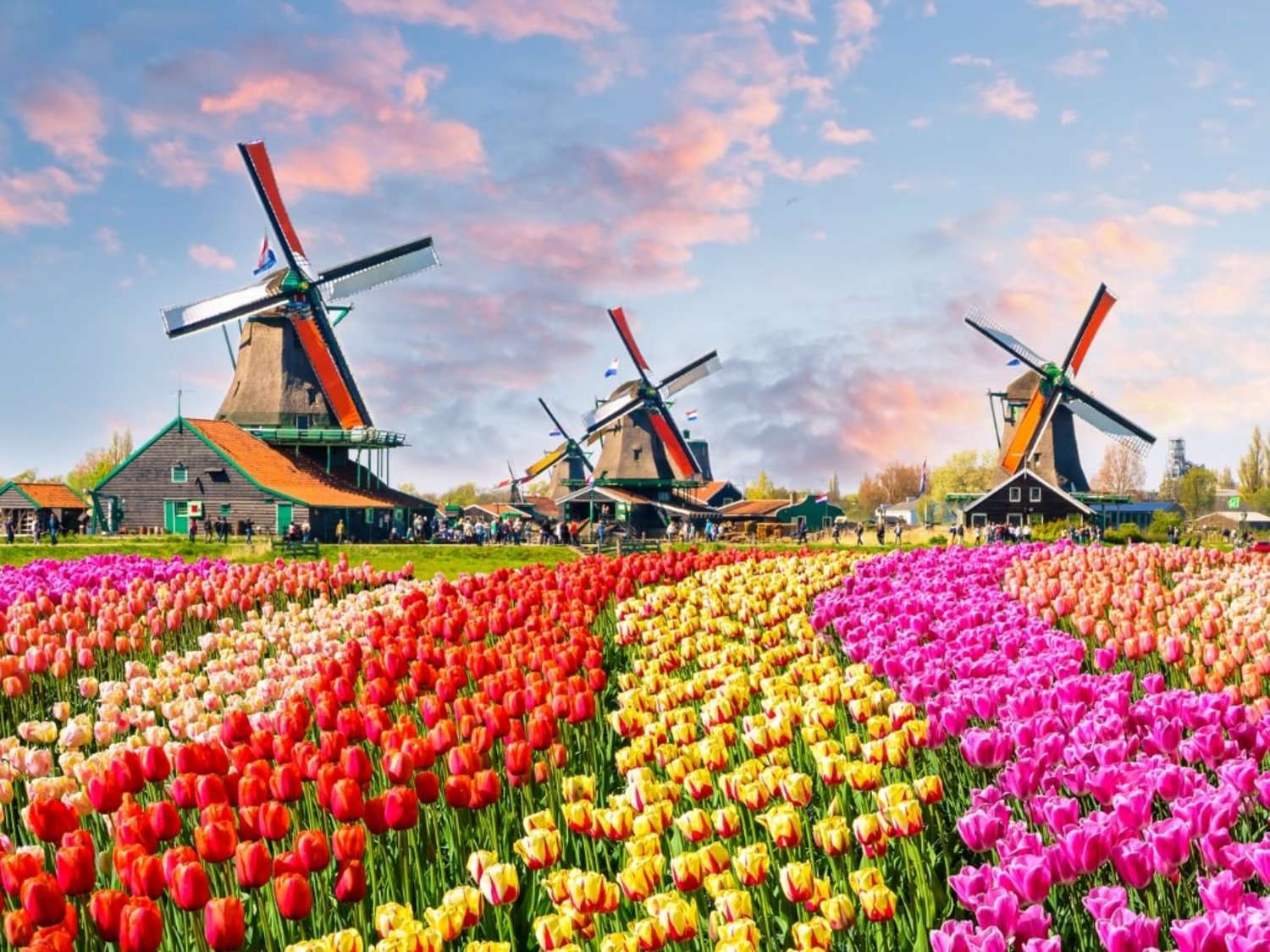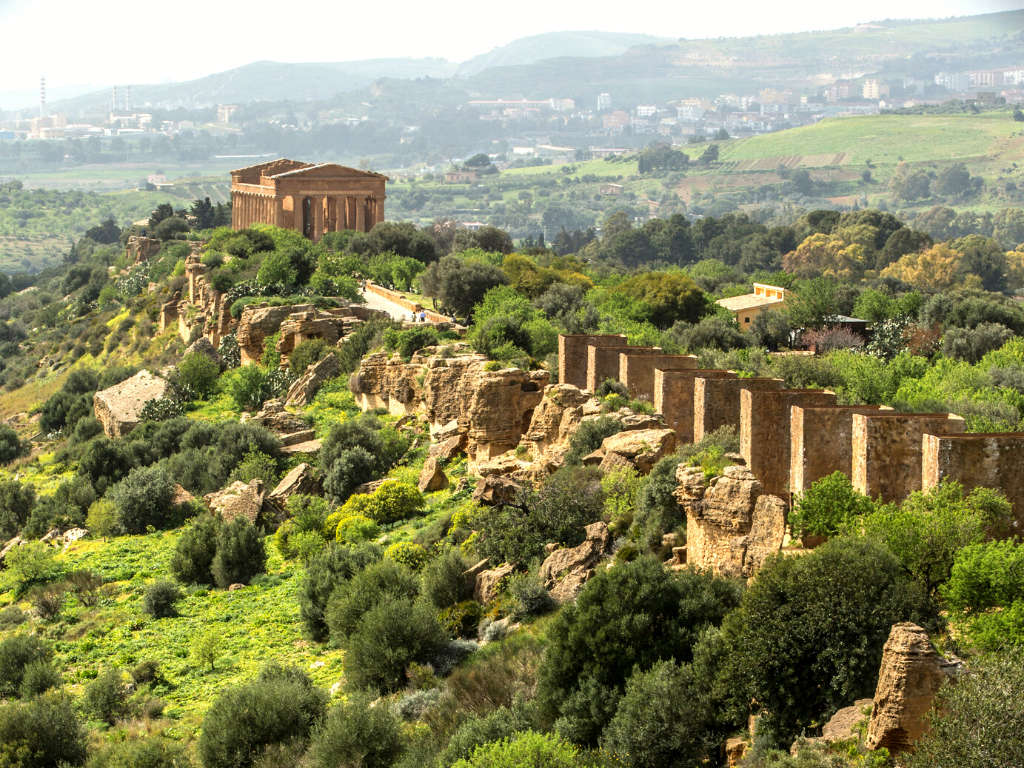It’s hard to believe the coveted, glittering bulbs of Amsterdam were once the price of a decent house in 1636. Along with windmills, bikes, and canals, tulips are very much the centerpiece of the Amsterdam image. April is the best time to enjoy these warm spring flowers, the fresh vibrant colors indicating new beginnings and celebration at winter’s end. While tulips in the Netherlands are now cause for joy, they weren’t always like that. In the 16th and 17th centuries, a tulip frenzy caused quite the stir among early Dutch traders. We’ll take a look at how an unassuming plant led to vandalism and bankruptcy, but first we’ve got to travel a little further west towards the Ottoman Empire to really understand the origins of the tulip.
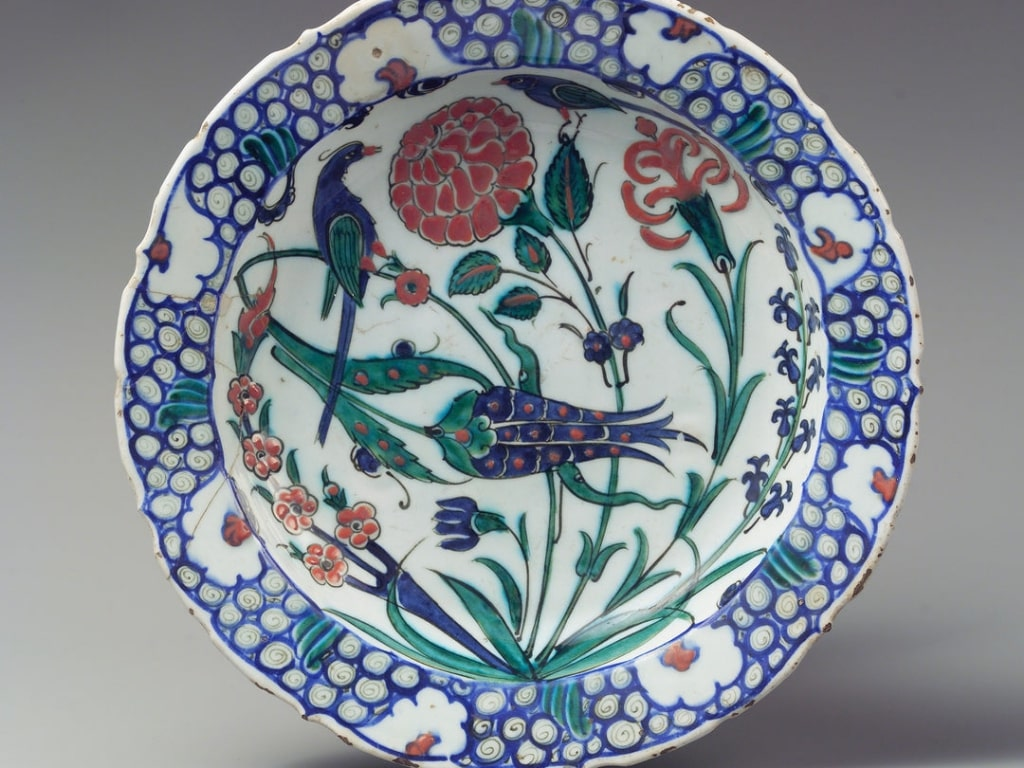
Why tulips are famous in Amsterdam
Before Amsterdam, Tulips Were Popular in the Ottoman Empire
According to our resident historian in Amsterdam, Alette Fleischer, tulips originated on a mountain range that spans present day Kyrgyzstan, Tajikistan, and Afghanistan. Mountainous regions tend to be more isolated, so how did they get all the way to the Netherlands? Nomadic tribes carried the bulbs and their seeds all across the area, their beauty eventually catching the attention of the Ottoman Empire. Tulips were a prized possession for the Ottomans, like the Dutch later on. From fashion to art, the fragrant flowers touched every part of Ottoman culture. In fact, the sultans used to wear tulips in their turbans, which is how the bulbs got their name.

Did you know?
In the 16th century, Dutch ambassador Olgier Gisleen van Busbeke came to visit Sultan Suleiman the Magnificent. Never having seen the delicate petals before, the ambassador pointed to them in the Sultan’s turban and asked him what they were. The Sultan, thinking that van Busbeke was asking about his turban, responded that it was his “tulipani,” or “turban” in Ottoman Turkish. From then on, the name tulip stuck for these beautiful flowers.
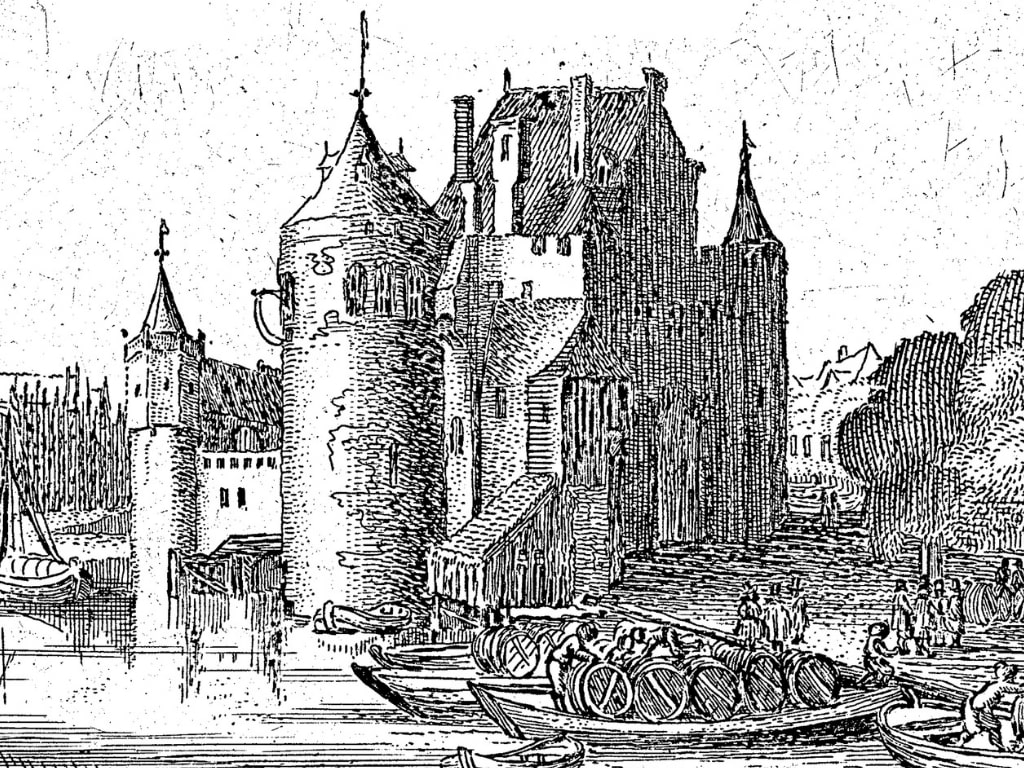
Early Tulips in the Netherlands
Enamored with tulips from the start, Flemish diplomat Olgier Gisleen van Busbeke took seeds from the Ottomans and brought them back to Holland where it would alter the image of Amsterdam and the Netherlands forever. Olgier gave the seeds to a botanist named Carolus Clusius and he planted them at the Hortus Botanicus Leiden, one of the oldest botanical gardens in the world (established in 1587). It takes seven years for tulips to blossom and when they did, the Dutch people took notice. The tulips were so alluring that early planters that populated the city with these colorful bulbs were vandals who stole the flowers from the botanical garden! With time, the honey-scented bulb became highly fashionable and the tulip industry became huge, especially during Holland’s most notable period of economic success and colonial activity.
In the 17th century, the Dutch would pay a certain price for them.
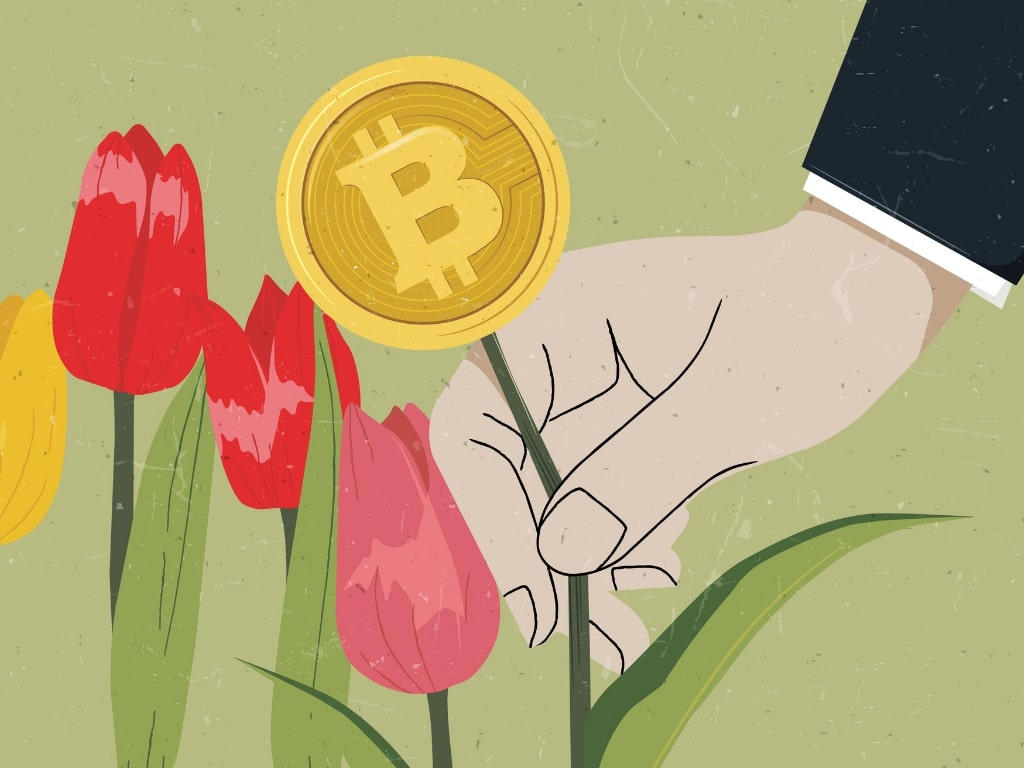
Tulipmania
You might be familiar with the term tulipmania. It refers to the economic phenomenon where prices of goods are inflated far above their worth. In the 17th century, the Dutch experienced a surge in wealth from their trade through the Dutch East India Company. The high class had money to spend on extravagant items, and tulips were among the most sought after luxury goods. From 1636 to 1637, the value of tulips increased 12 times their normal worth and then sharply declined. Consequently, even wealthy merchants defaulted on their payments to tulip guilders.
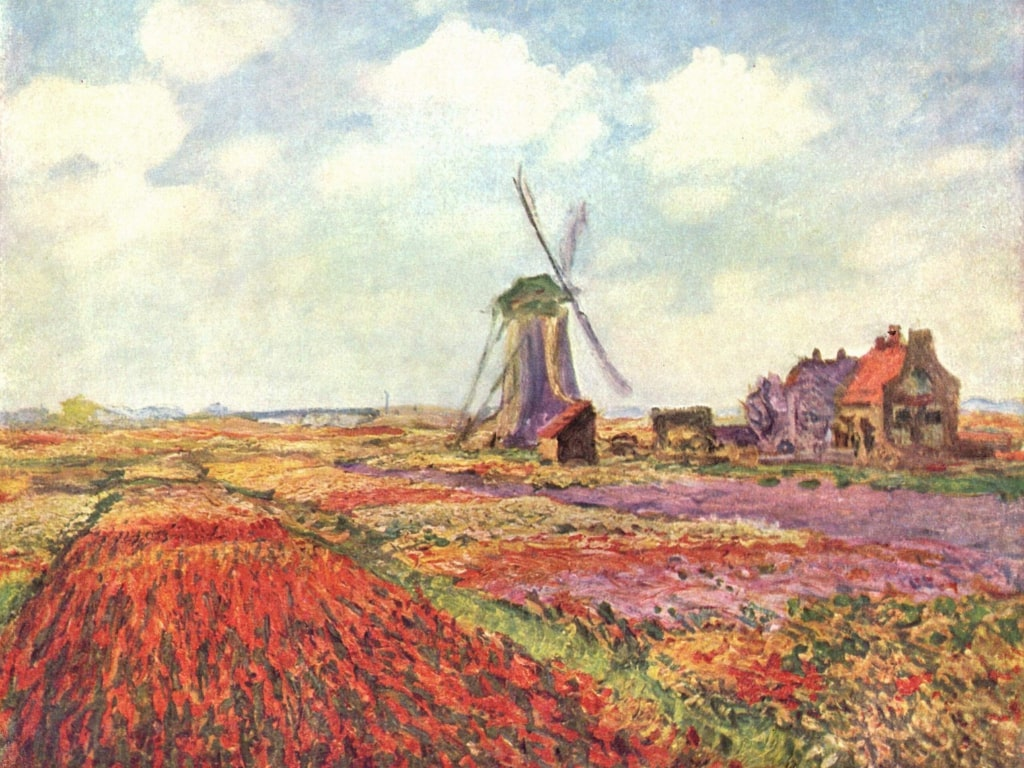
While the original tulipmania resulted in strained relationships between buyers and sellers, the widely held belief that the Dutch economy suffered an economic collapse because of the plant simply isn’t true. The event was highly satirized, the Dutch poking fun at themselves at what was a pretty funny and strange phenomenon. Still, tulips prevailed in the Netherlands, permeating every sphere of culture. Art popularly depicted the beautiful flower amongst the windmills of Amsterdam as seen through Van Gogh and Claude Monet’s paintings, soon steam engines would carry tulips across the ocean, and tourism emerged in the Netherlands, attracting people near and far to these balls of brightness well into the present.

The best time to see tulips in Amsterdam
There are millions of tulips in Amsterdam, and seeing them in full bloom is an absolute marvel. Walking through the swirling fields of purple, yellow, and orange, you might understand how the Ottomans and Dutch came to be obsessed with the lush splendor of these magnificent flowers. The best time to see tulips in the Netherlands is mid-April to early May though you may get lucky in March too. Of course, weather can come in the way of your spring trip to Amsterdam, but there are plenty of flower forecasts you can look into if you want to catch a glimpse of the floral fields.
If you’re headed to the Keukenhof Garden, you might want to plan your stay for mid-May. Since the Keukenhof Garden tends to the flowers more than the bulbs, they’ll take longer than the flower fields to fully bloom.
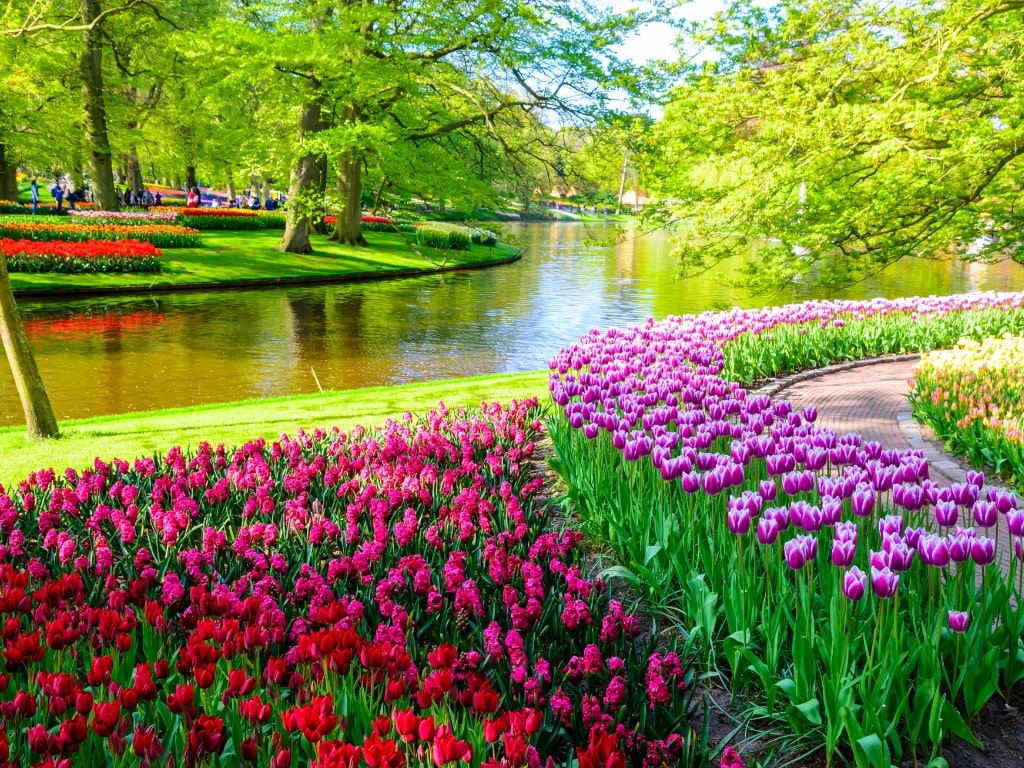
Keukenhof — The Garden of Europe
The lush and magical Keukenhof garden, the world’s largest flower garden, has received the title of the “Garden of Europe” for good reason. Located about 35 minutes from Amsterdam in Lisse, Netherlands, these grand grounds not only boast spiraling floral fields of all kinds, but also a castle, streams, and other hidden natural delights.
Though Keukenhof Castle was built in 1638, 15th-century grounds of the “kitchen garden” pre-dates the castle by a couple of hundred years. The use of the garden as a showground for bulbous flowers started in 1950, an initiative of Holland’s bulb growers. The Tulip Festival in Amsterdam, occurring during the peak of tulip blooms between April and May, is the most lively way to experience the vibrant, open Garden of Europe.
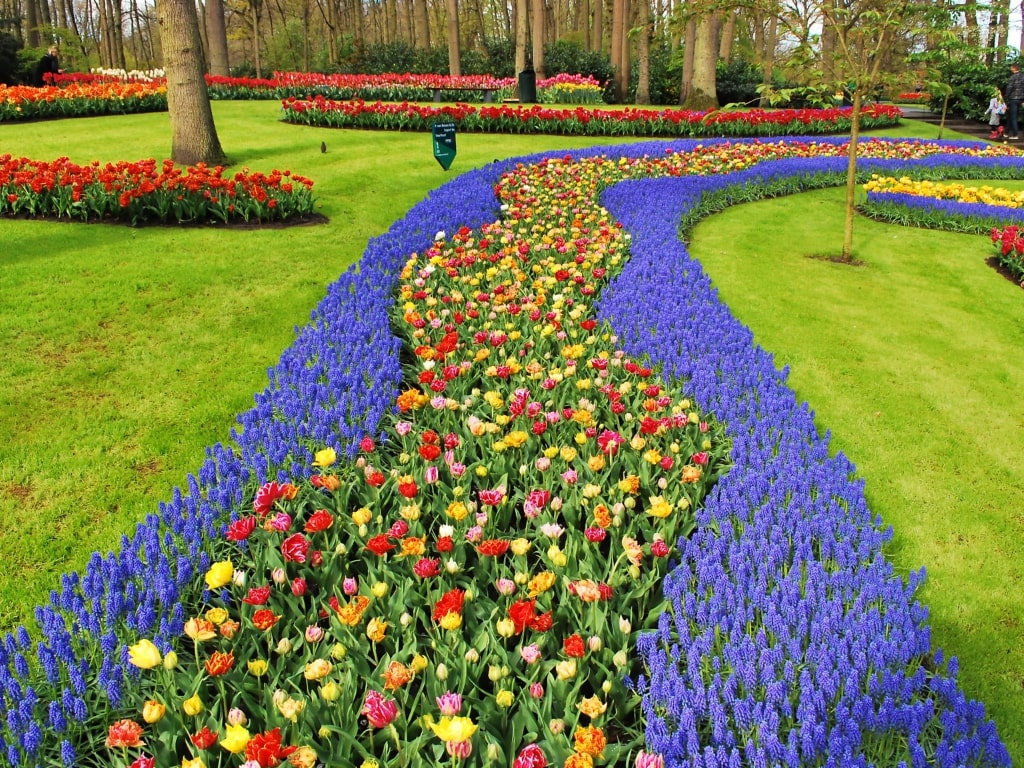
Tulips in Amsterdam #withContext
Our local historians in Amsterdam have dedicated years of their studies towards the intricacies that make Holland who it is today, including the complicated tulip history. The story of these luxury bulbs goes beyond its beauty. It’s steeped in an economic and political side of the country that our experts would know intimately. Spring is the perfect time to visit Amsterdam, and because of the flower’s seasonality, the perfect time that you can book our Tulipmania, Then and Now: Keukenhof Gardens Excursion to dive deeper into the Netherlands and the pivotal role this flower played.
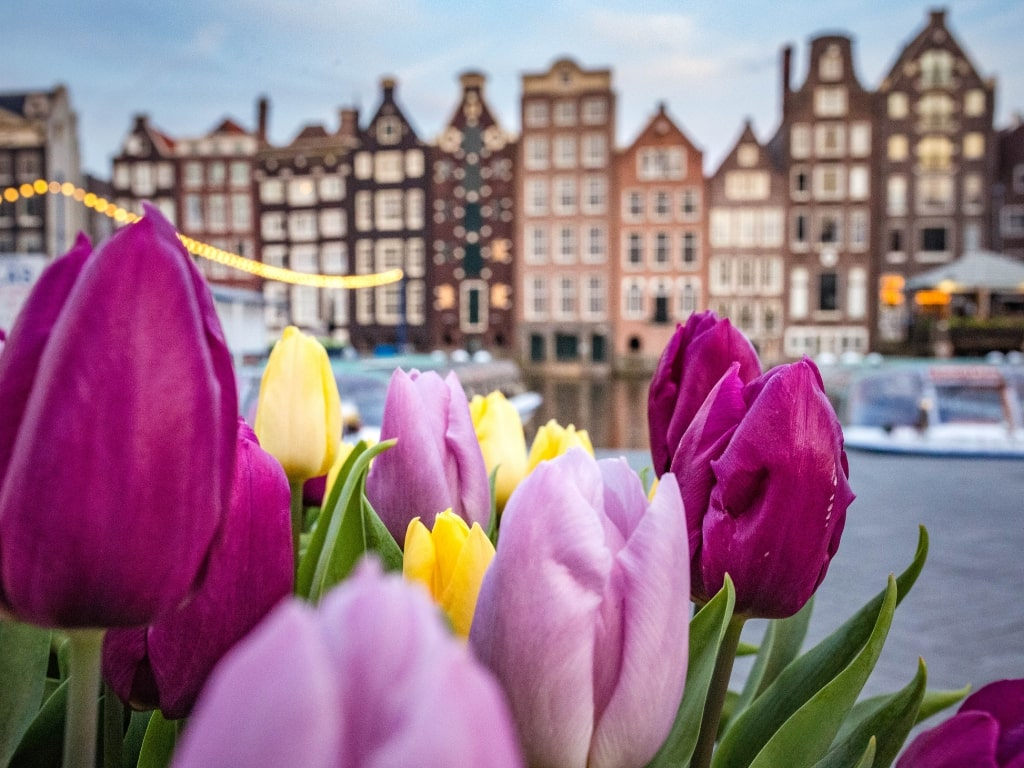
Where else you can see tulips in Amsterdam
While Keukenhof is the best place to bask in the glory of tulips, there are a number of other ways to experience their extraordinary color and scent as well. Here are some other opportunities while you’re in Holland:
- Near the Keukenof, you can find the largest flower bulb fields about 45 minutes southeast of Amsterdam near Leiden and Den Helder, towards the North Sea Dunes. Grown on cleared sand dunes, the soil conditions here are perfect for tulip growth.
- Cycle through the picturesque historic town of Leiden, ornamented with the intoxicating tulip as you make your way to Haarlem.
- Visit flower markets and parades all around the Amsterdam area. Spring is a popular time for festivals of all kinds, and tulips are especially popular in flower shops.

Amsterdam Tulip Museum
So influential is the history of the tulip industry in the Netherlands that it deserves its own museum. Through photographs, interactive displays, historical objects, and other engaging exhibitions, you can get an inside look at the tulip trade at the height of Holland’s glory centuries ago. The real draw of this museum lies in its ability to tell the full, unique story of the tulip with all of history’s twists and turns.
